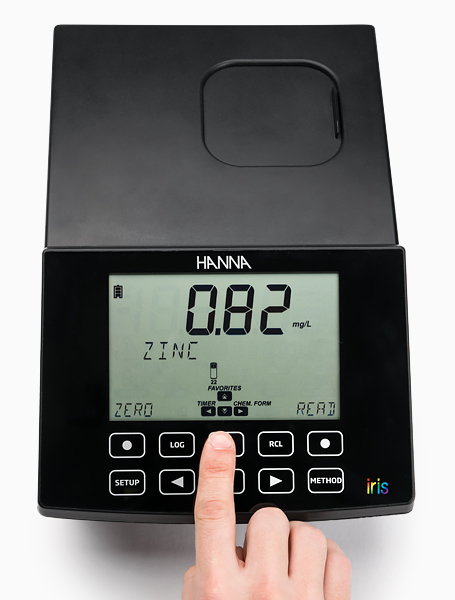Advanced Split–beam Optical System
The optical system is the heart of a spectrophotometer. Ensuring the optical system is built with the best design and highest quality materials will guarantee accurate readings and a long life for the meter. When developing this meter our research and development team paid special attention to details and combined many small improvements to a typical spectrophotometer design to create a meter with unprecedented performance.
Replaceable tungsten–halogen lamp
To be able to measure in a wide variety of wavelengths a broadband light source is necessary. In the iris spectrophotometer this is accomplished by a tungsten–halogen lamp. As these lamps do not last indefinitely, it is necessary to change them throughout the life of the meter. The pre–alignment of the lighting fixture guarantees that the bulb is in the same position every time it is changed. This generates peace of mind as there is no need to worry about realigning the light source.
Beam splitter
The beam splitter is added to the optical system for use with a reference detector to ensure that the measurement compensates for any drift in the light source. It works by splitting the light emitted by the tungsten lamp into two beams and sending one beam of light to the reference detector that measures intensity. If there are any fluctuations in the light source the meter detects this and compensates through a mathematical calculation. The reference detector also saves battery life and leads to improved speed of the meter as the lamp doesn’t have to warm up prior to use.
Concave grating
This element of the optical system is what generates the spectrum of light. When the light from the tungsten lamp hits the grating it is met with interference coatings that turn the polychromatic white light into a rainbow. This rainbow contains dispersed light at all wavelengths in the visible spectrum. The rotation of this grating is what allows for a specific wavelength to be selected. This ability is one of the biggest differences between a spectrophotometer and a photometer. The concave grating which accomplishes this is superior to other types of diffraction, such as prisms, as it minimizes stray light generated and has constant bandwidth.
Narrow bandwidth and high resolution
Having a small bandwidth is necessary to accurately measure narrow peaks. The iris spectrophotometer maintains a narrow bandwidth of 5 nm resulting in good spectral resolution. This leads to accurate measurement of sharp, narrow absorbance peaks. Additionally, the high resolution of 1 nm generates greater sensitivity as the wavelength is closer to where the sample absorbs the most light.
System check
Upon turning on the meter a performance check occurs to confirm that the light source is working properly and to calibrate the position of the grating. The grating calibration works by scanning for the “zero order” light reflecting off the grating. If any mechanical problems are present, the meter will display an alert. This feature establishes confidence in measurements knowing that the meter is always working properly without needing to run any additional tests.


